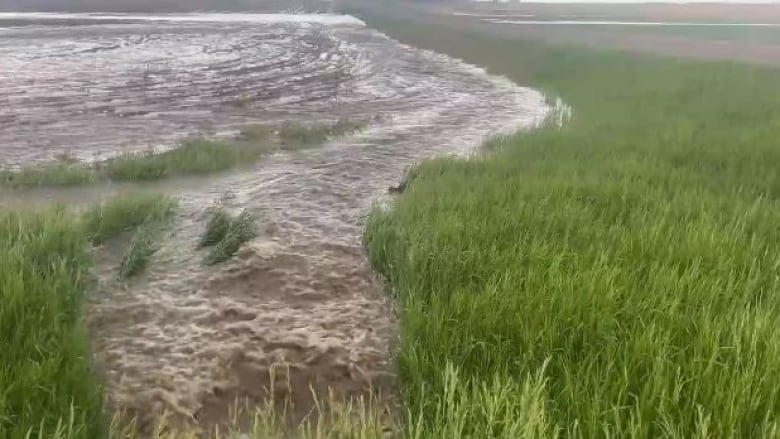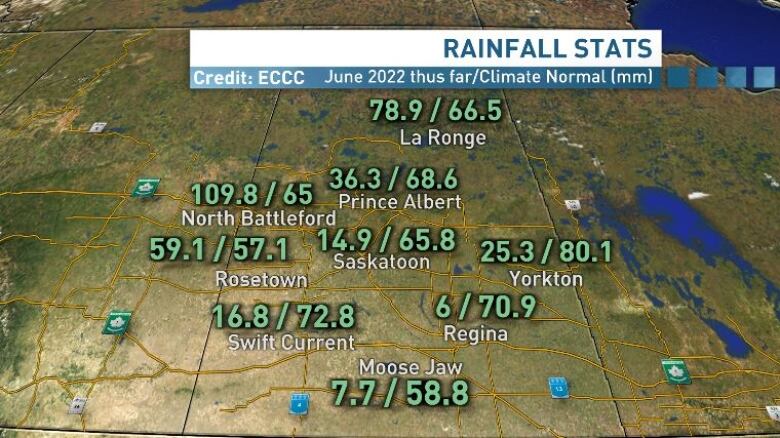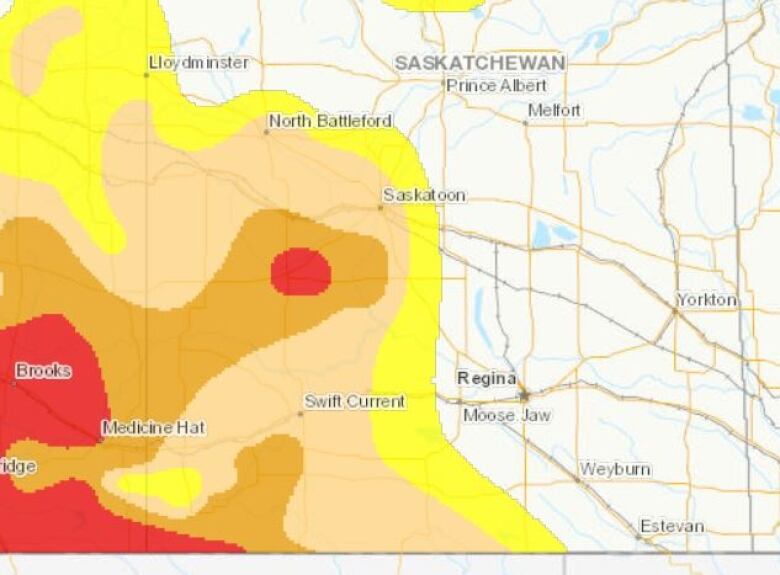From drought relief to filling streams, heavy rain proves beneficial in Sask.
Rain also lowers fire risk, but more still needed in some places

This week's heavy rainfall in Saskatchewanmight have felt a bit excessive, especially for those inareas that were already drenched, but it has helped significantly in regions that needed the moisture.
Some communities in the province are already above their average June rainfall amounts. According to Environment and Climate Change Canada data, North Battlefordsits at about 110 millimetres so far this month. Thecity usually receives 65 mm in the entire month.
About 101 mm fell inthe span ofa few hours onTuesday.
La Ronge has received about 79 mmso far. Its average for the month is about 66 mm.
Some areas are still well below average for June moisture.Regina and Moose Jaw have seen less than 10 mm so far this month. Both cities usually get well over 50 mm.

Moisture'a godsend'for west-central farmers
Prior to this week's rain, Jeremy Welter had only received about 13 mmof moisture on his farm near Kerrobert since the beginning of April.
The recent rainfall changed that.
"It's been a godsend, quite literally, [in]every sense of that word," said Welter.
"If we had missed this rainfall, we were looking at having anything from very significant yield loss to the possibility of having a crop insurance collection year where we don't have a harvest."

But all the rainstillmightnot be enough.
John Pomeroy, the Canada Research Chair in Water Resources and Climate Change at the University of Saskatchewan, said areas south and west of Saskatoon including the Kerrobert area are still 40 to 80 per cent below average moisture levels between April 1and mid-June.
Agriculture and Agri-Food Canada hasclassifiedthis area of Saskatchewan as having "moderate" to "extreme" drought, as of May 31.

Pomeroy saidrelief should soon come as record-level snow packs in the Rocky Mountains melt. Coupled with already-high flows inrivers in Alberta from this recent storm, that will likely increase levels in the South and North Saskatchewan River systems.
"That South Saskatchewan system is feeding water for human consumption for about 70 per cent of the population of Saskatchewan," said Pomeroy. "So it's extremely important we keep water in that system."
He warned thatclimate change could reverse the relief the rain has brought.
"It's probably prudent to expect some very uncivilized weather come our way from time to time, whether it's extremely wet or extremely hot and dry," he said.
The Water Security Agency toldCBCThursday thatlevels on both the North and South Saskatchewan Rivers arepredicted to rise between two and three metres in the next week, with levels onLake Diefenbaker expected to increase by about two metres.
Even with the extra water, the lake will still beabout two metres below its usual mid-June level.
The same situation is being seen in the Churchill River Basin, where above-normal flows are still below those observed in 2020, when the last flooding event happened.
Flooding is not expected anywhere in the province as water levels increase, according to the WSA.
Brief reprieve from fire risk
The province's wildfire risk briefly dropped to a "low" rating through much of the province after the rain, but it has since rebounded to "high" and "extreme" levels in south, central and far northern regions.
As of Friday morning, there have been 151 fires in the province this year, compared to the five-year average of 132 by this time of year.
Many of the active fires are in the far north, where two are listed as"not contained."

In a statement to CBC, the Saskatchewan Public Safety Agency said that since the fire risk is lower in areas that received heavy rain, some resources are being moved from there to the north to assist in fire control.
"However, things can change quickly," the statement reads. "Fine fuels, such as grasses and small branches, can dry out quickly as temperatures rise. This could result in more areas of the province returning to moderate or high wildfire risk within a few days."












_(720p).jpg)


 OFFICIAL HD MUSIC VIDEO.jpg)
.jpg)



























































































